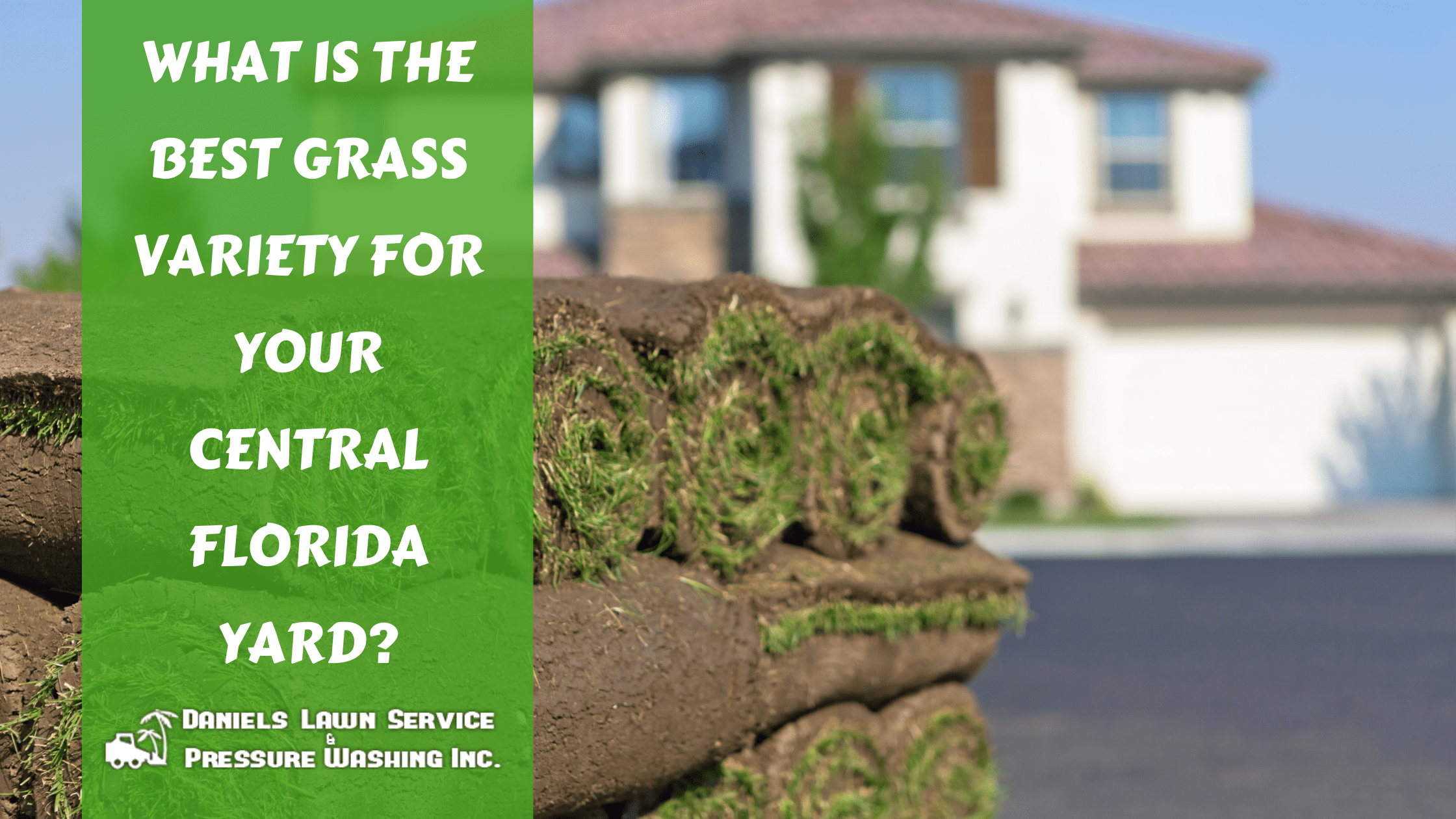
When it comes to choosing the best grass for your Central Florida yard, there are many factors to consider. Each variety has its own characteristics, optimum growing conditions, resistance to disease and destructive insects, and suitability for the type of use it will receive. Since there are many varieties of turfgrass, choosing the one that is right for you and your home will save you a significant amount of time, effort, and even expense over the years. Whether you’re a yardwork enthusiast or prefer to hire a lawn maintenance service, this blog post tells you everything you need to know about turfgrass.
Top Turfgrass Varieties for Central Florida
The most popular choice of turfgrass locally is St. Augustine. Not only does it thrive in high temperatures and is drought-resistant, St. Augustine grass performs well in most soil conditions. It produces green/blue blades that are broad and flat, making it an attractive lawn that’s overall easy to maintain. St. Augustine grass grows fast with little help, so it will need to be mowed more frequently than some other varieties.
Bermuda grass is most commonly used for parks and golf courses, which testifies its durability. In residential lawns, it has an aggressive growth rate that has been known to infuriate homeowners, leading to its nickname of “devil’s grass.” However, Bermuda grass has such redeeming qualities as a deep root system that makes it resistant to drought and weeds, and the afore-mentioned great performance in high-traffic areas. This could be the right choice for an active family that spends a good amount of time outdoors playing and romping with the dogs!
Centipede grass can be the perfect choice for homeowners who prefer a low-maintenance yard, as long as it’s used in low-traffic areas. It does require frequent watering to stay healthy but otherwise doesn’t need much pampering. Just mow when necessary and apply fertilizer once or twice a year. It likes shade and can handle cooler temperatures, making it good for yards with a lot of shade.
For more information on turfgrass, our blog post – “How to Find the Right Kind of Grass for Your Central Florida Yard” – covers this topic in greater detail.
What to Consider When Choosing a Turfgrass
First, you’ll want to observe how much sunlight and shade your yard receives, as well as the irrigation of your yard. If you don’t have irrigation installed, watering your yard regularly works just as well.
Next, check the pH level of your soil. The perfect balance is 7 on a scale of 0-14. Soil that receives a lot of rainfall will tend to be a bit more on the acidic side than soil that receives not nearly as much. For example, a soil pH level anywhere between 5.0 and 8.5 is easy to maintain and perfect for St. Augustine grass, while centipede requires a 5 or a 6, and Bermuda grass can be planted in just about any soil.
The next thing you need to think about is how much time and energy you have to spend in your yard. St. Augustine and Bermuda grass grow fast and spread faster than Centipede. This means that they need to be mowed more often, preferably once a week. All of these grass types are available as both seeds and sod. While growing from seeds will clearly take longer, some homeowners prefer it as the most economical option.
Learning about your yard and the kind of effort you want to put into it will help you decide which turfgrass is best to use and whether or not you should tackle the project yourself or hire a professional landscaping service.
Doing it Yourself – How to Patch Bare Spots
What happens to your yard after it experiences drought, heavy foot traffic or pests? If you’ve ever noticed your yard looking patchy in some places but flourishing in others, it might be time to determine what you can do to fix it. The Home Depot provides the following steps for patching bare spots:
Prepare the soil – This requires removing any dead grass, weeds or damaged grass from the area. You’ll want to start with fresh soil that is free of rocks and roots, which is done by using a rake to turn over the soil by about six inches. Once you add and mix the compost into the soil, you can lightly tap down the soil.
Sow the seeds – Take this step if you prefer to use seeds instead of sod. With seeds, you can either use your hand or a spreader. You’ll want to spread the seeds evenly at the rate recommended by the package and take care to not make a pile. Use your rake to cover the seeds in about one half-inch of soil and then pack it in with a roller or your feet.
Patch with sod – If you’re looking for a faster fix to your patchy yard, turf is the way to go. You simply cut out a patch of sod that fits your fresh soil and place it inside, making sure to merge the edges together with your hands.
Water – Water your seeds with a gentle sprinkler or the mist setting on your hose. For sod, you can use a more powerful spray. Soak the dirt in about four inches of water on the first day and continue until well established. Follow up with fertilizer for a well-nourished lawn.
If you still need help deciding which turfgrass variety is best for your property, lifestyle, and budget, Daniels Lawn Service & Pressure Washing Inc. can help – as well as provide experienced landscaping design services. We serve Central Florida – including Orlando, Longwood, and Sanford. Contact us, today and we can plan your yard with you for your enjoyment. We want to make sure you have the best yard for picnics, playtime, BBQs, or anything else that brings the neighbors around to admire your lawn all throughout summer and throughout the year!


